Introduction
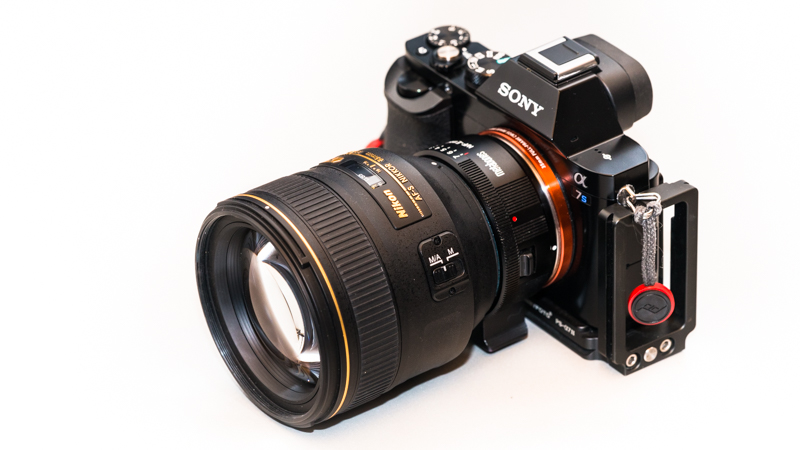
In this short article I will explain how to adapt Nikon G lenses (which do not feature an aperture ring) to Sony A7 series cameras.
Update 05/18/17: thoughts on Rayqual adapter added
What is a Nikon G lens?
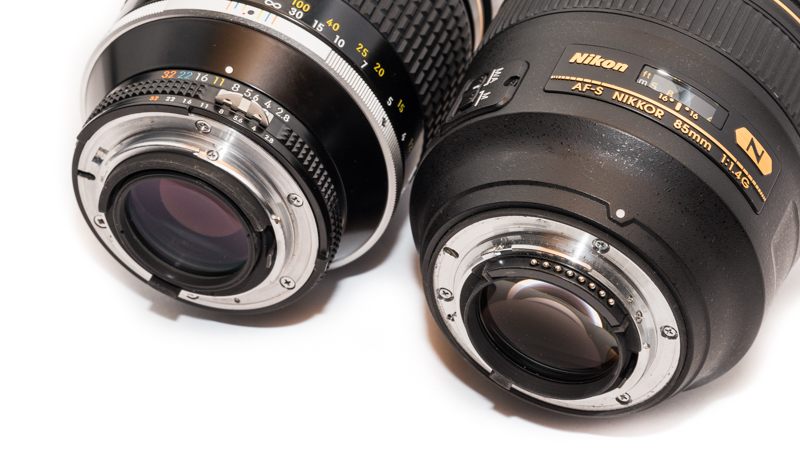
Earlier Nikon lenses (often referred to as “Nikkor”) feature an aperture ring and carry prefixes such as Ai, Ai-s, Ai-p, AF and AF-D. Around 2000 Nikon introduced the “G” suffix, which is not really the description of a feature but merely means that there is simply no aperture ring anymore. But until the introduction of the “E” suffix the aperture mechanism was still operated mechanically by a small lever in the camera and therefore it is possible to use these lenses with a completely mechanical adapter. Unfortunately there is quite a degree of variation when it comes down to the usability of these adapters, which is something I will talk about in the next paragraph.
In case you want do adapt one of the newer “E” lenses with electronic aperture control (such as Canon uses on their EF(-S) lenses and Sony on there (F)E lenses) your only option right now is the Commlite CM-ENF-E1 AF-adapter, which can be preordered on ebay.com (affiliate link). I have not used this adapter yet (it’s main selling point is, that it would allow for AF-S lenses to be used with autofocus on newer A7 cameras and aperture control shall work with “G” lenses as well), so I would recommend watching out for some independent reviews before buying/preordering one.
Right now the “E” lenses are rare birds (mainly the Tilt-Shift (PC) lenses and some Super-Telephotos), but also many of newly introduced consumer lenses feature a purely electronic diaphragm, such as the AF-S 300mm 4.0E PF VR, the AF-S 24-70mm 2.8E VR and the AF-S 16-80mm 2.8-4.0E VR, so I expect to see the use of it more often in the future.
As this may prove to be quite difficult to unterstand I prepared the following table for you:

Keep in mind though: as I have not used the commlite AF-adapter yet these informations are merely based on the manufacturer’s data.
Differences in adapters
When searching for a Nikon G to Sony E Mount adapter on the likes of Amazon.com/Amazon.de
* or ebay.com
/ebay.de
* you will notice there are really cheap ones starting at 14$ and more expensive ones for around 150$ (from the US manufacturer Metabones and the German manufacturer Novoflex) and quite a lot in betweeen. I am currently using the Metabones
adapter (which I can recommend) and a Nikon-G to Leica-M adapter by Pixco (which I can not recommend, read on) in combination with the Voigtländer VM-E helicoid adapter and Jannik from our team is using the Novoflex adapter.
* affiliate links
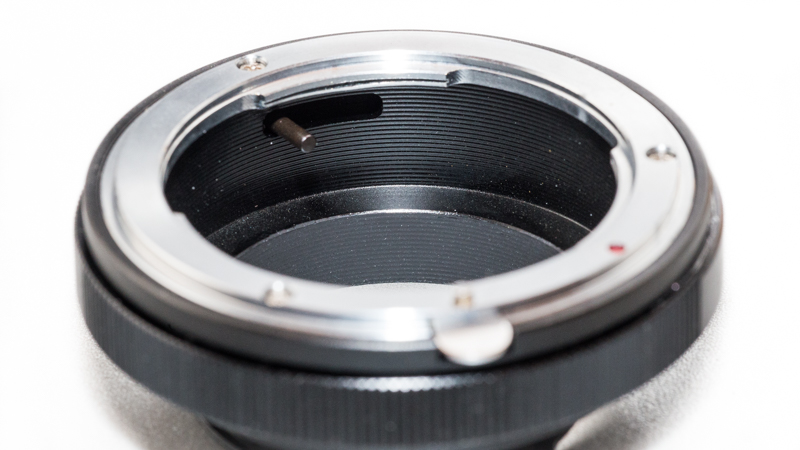
Many cheap adapters are working like this: an outer ring can be rotated and on this ring (inside the adapter) is a small lever which is directly coupled to the aperture mechanism when a lens is mounted. This sounds like a good idea at first but the problem with my Pixco adapter is: turning the adapter’s aperture ring just 4° means you traveled all the way from fully open to fully closed . This makes setting the aperture quite an awful experience. To make my own shooting experience a little less awful I painted markings on the adapter for open and fully stopped down, as you can see in the picture below.
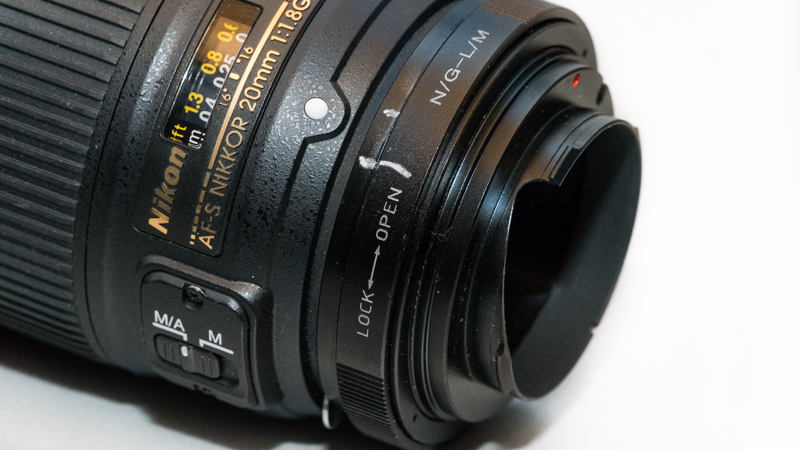
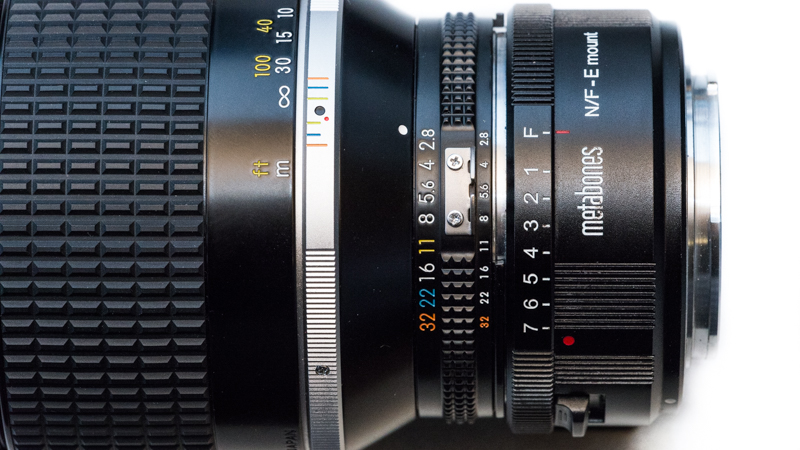
With the more expensive Metabones on the other hand, as you can see in the photo above, it takes around 30° from fully open to fully closed which exactly corresponds to the markings on the manual Ai-s lens with it’s own aperture ring (for the curious of you: this is achieved by using quite a complex mechanism inside the adapter). The numbers on the the ring are telling you how many stops you have stopped down the lens. So in case you have mounted an f1.4 lens “F” means you are shooting at f1.4 while setting it to “1” means you are shooting at f2.0, “2” means you are shooting at f2.8 and so on.
This makes setting a desired aperture value quite an easy task (the mechanism is clickless by the way).
Update: I now finally got a Rayqual Nikon-G to Sony-E adapter (affiliate link) and this is now the adapter I recommend. Compared to the metabones you unfortunately lose the detachable Arca Swiss plate, but in return you get light baffles to reduce reflections and an aperture ring with click stops!
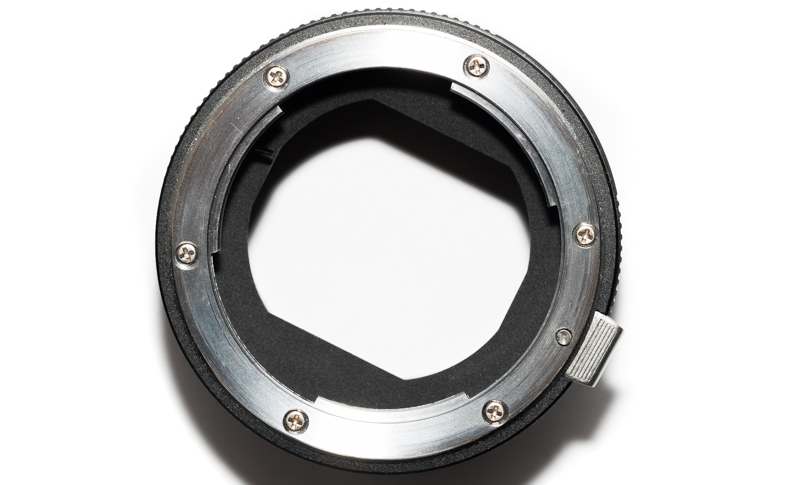
The only real downside: in some countries it is very expensive as there are no distributors and it needs to be shipped directly from Japan.
Conclusion
If you just intend to use old manual Nikon lenses that have their own aperture ring many of the cheap adapters may be up to the task as well. But if you seriously consider using Nikon G lenses without an aperture ring on your A7 series camera it may be worthwhile to invest a little more money for a more sophisticated adapter like the Metabones (you can get one at Amazon.com/Amazon.de
affiliate links) or Rayqual (Amazon.com affiliate link).
One final word of caution: don’t buy the Pixco adapter I showed in some of the pictures. The biggest problem is neither the short throw of the aperture ring, nor that the “open <-> close” markings are printed in the exact wrong order, but when using it I noticed strange flares in my pictures. After examining the problem I discovered a light leak, which I then had to cover with some black tape, as can be seen in the picture below. This is simply ridiculous.
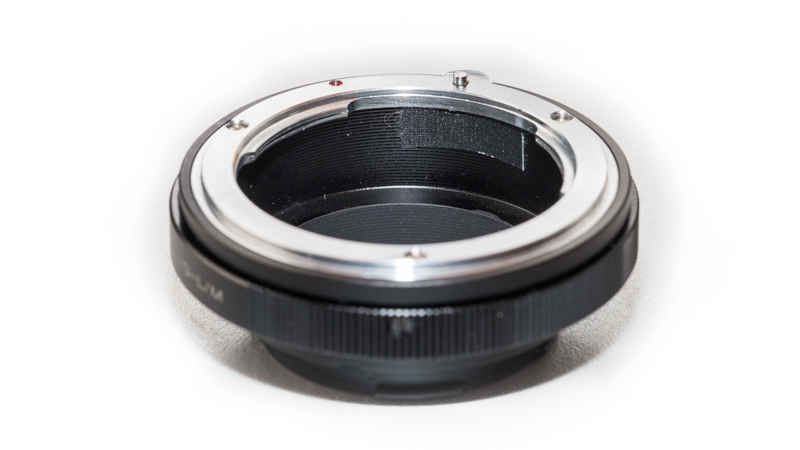
Further Reading
Support Us
Did you find this article useful or just liked reading it? Treat us to a coffee!
![]()
![]()
![]() via Paypal
via Paypal
This site contains affiliate links. If you make a purchase using any of the links marked as affiliate links, I may receive a small commission at no additional cost to you. This helps support the creation of future content.
Latest posts by BastianK (see all)
- Review: SLRmagic 50mm 0.95 Hyperprime LM - July 5, 2025
- Full Resolution Pictures getting fixed - July 4, 2025
- Analogue Adventures Part 42: A wedding with Eastman Double-X 200 - July 2, 2025
Hi, Bastian. In the course of your using Nikkor lenses, did you ever compare image quality between the 180mm/2.8 AI-S and either of the subsequent auto-focus variations of the 180mm/2.8 with revised optical formula? All have a strong reputation, of course.
I have the AI-S version, but I would consider using either of the later AF iterations for landscapes in MF mode on my Sony A7, if image quality were really enhanced on the later lenses. Also, why we’re at it, how do feel the 9 ounce lighter 200mm/4.0 AI-S compares to those for landscape work? Do you know of any differences in suitability for use with a 1.4x teleconverter, IQ-wise, when doing landscape photography?
Thanks for this, and for the helpful article!
Dear Fred,
let me say at first, a review of the 180mm 2.8 AIs ED on the A7s is in the making.
I did not yet have the chance to compare it directly to one of the later AF versions, in which I was actually not overly interested, because to me the AF(-D) lenses are the least likeable among all Nikon lenses (the “not plastic” 180mm AF-D 2.8 shall be one of the better ones though).
What I can already say is how astonished I was by the quality the 180mm 2.8 AIs ED delivers (and I also have a 200mm 2.0 VRI, so the bar was set quite high).
Sharpness is great over the whole frame at any aperture and any distance (even close up with a PK-13 extension tube), coma is practically a non issue, as are CA (longidutinal and lateral) and the bokeh is really great as well.
The downside is that it is very front heavy and not so comfortably to use handholded on the A7s (it may be a little better with the MkII models, which I haven’t tested yet), which brings me to the 200mm 4.0.
The absence of ED glas kept me away from these lenses, as, in my experience with telephoto lenses, this really makes a difference here.
Someone ones compared the 200mm lenses: http://nikonclassics-michalke.de/blog/?p=291
It is in German only, but I think you will still be able to get something out of it 🙂
I’ve owned both, the 200mm f/4 Ai-S is nice but needs to be stopped down to at least f/5.6, it has a lot of purple fringing on the A7 and is poor on teleconverters compared to the 180mm f/2.8 ED which does quite well with the TC-201, maybe better than it does with the TC-14a (at least my copies).
For landscapes, by f/11 I don’t see much of a difference at all. I will say the 200mm f/4 seems to have quite a bit of sample variation, or perhaps because it’s a cheap lens, many were abused during their life.
Thanks for the info? Do G lenses have any standard experience for manual focus (dampening, focus throw, etc) , since we would be using them as manual focus lenses? For example, I’ve read that the 20mm F1.8 has a very narrow focus throw, making manual focus difficult. I’m also considering the 18-35mm G as a budget option for wide angle, but am curious on this issue.
Thanks for sharing your expertise!
Dear Jordan,
a review of my experience with the 20mm 1.8 on the A7s will be posted on this blog in a few days. The focus throw is quite narrow (~30°) but with a wide angle lens, even if it’s max. aperture is f/1.8, this is acutally not much of an issue for me.
Apart from that there are G lenses with a slight “slack” when changing the direction of rotation of the focus ring and the 20mm is one of them, but I have covered this topic quite thoroughly in my review, so please be patient for just a few days 🙂
Sounds Great Bastian. In case you do/don’t mention it on that particular lens, the short focus throw worries me a little for astrophotography – maybe add in a comment about fine focus on stars if you hadn’t planned on it!
Love love love the work you all are doing!
Bastian – could you also add the weight of your metabones adapter with and without the tripod foot? Thanks!
Hey, please excuse the delay.
With the tripod foot: 175g
Without the tripod foot: 154g
Bastian, thanks for the great info. I have been a Nikon DSLR user since 2008. I am currently considering investing in an A7 II along with a Nikon Adapter. My questions is, what is the Vöigtlander Helicoid? What do you use it for? Also, is there a wayI use Leica Mount lenses on my Nikon DSLR?
You can’t use Leica M-Mount lenses on your Nikon DSLR, but you can use some of the bigger Leica R-mount lenses on them if you exchange the mount (google: Leitax).
Regarding the Voigtländer Helicoid take a look at this review.
Hi Bastian,
So for Nikon G to Sony E adapter, between Metabones and Novoflex, which one would you suggest?
Cheers
Ryan
As of today I would recommend the Rayqual adapter, as it offers click stops and is lighter than the others.
Thank you so much for the quick reply!
I have no idea before that this Japanese adapter manufacturer even exist. They seem to be really proud of their craftsmanship and product quality.
I will update the article soon to include the Rayqual adpater.
I only have it for a few weeks and wanted to thoroughly test it before recommending it, but now is the time I guess 🙂
Hello Bastian,
Thank you very much for all your articles, they are very interesting and concise.
I’m one of those people with an adapter that doesn’t allow focusing to infinity in some cases. I bought a totally manual, contactless Commlite adapter that works for ais-afd-afg lens. The fact is that at short focal lengths I can’t focus to infinity, but i can with long focal lengths. It is very curious, with a 24-120, at 120 I can focus at infinity right on the infinity mark, but at 24 I have to refocus much beyond the infinity mark (but not all lens allow it). With my Nikon, the 24-120 infinity mark is infinity focus at 24 and 120.
My theory is that the adapter is faulty and is a few millimeters longer than it should.
What do you think?
Thank you very much! : D
This is easily possible.
I did not have exactly great experience with Commlite products in the past.
The Nikon 24-120mm is a modern lens with internal focusing and needs a decent adapter.
Try finding a Rayqual/Kindai Nikon-G -> Sony-E adapter.
Thanks you! I bought a viltrox speedbooster and works really well. I have just bought the same adapter but without the glass. If it doesn’t work well I will buy Rayqual/Kindai.
Thanks!! 🙂
The Rayqual adapter seems quite well made, but it vignetted terribly (totally black corners) with my Nikon 24-70mm f/2.8 G lens, making that lens effectively a less useful 33-70mm lens.
Hi
Which adapter for manually focusing E type lenses with aperture control or at least wide open shooting if no aperture control.
I am buying 300 F4 PF, and would like to have MF capability for my a7 series camera (III)
Thanks,
Nde
If you want aperture control (and make use of the VR in the lens) you need the Commlite CM-ENF-E1. It is your only option.
If you don’t care about aperture control pretty much every adapter will do, I would recommend the Rayqual/Kindai in that case, as of all the adapters I tried it was the only one having the true exact length.
Hi Bastian
Thanks for your reply. I understood. I have one more question (because Commlite ENF E1 is not available here).
I) If we use a MF adapter (for Nikon E type lens), the aperture control is not possible. But will it be always wide open or always stopped down completely?
2) What do we mean by infinity is not reachable as is the case with few adapters? Does it mean you will not be able to manually focus on a distant/infinity object?
Regards,
Nde
1) As far as I know the lens will be at f/4.0 when there is no electronic contact, if not you can use an F-mount camera, set it to the desired aperture and unmount the lens without turning off the camera.
2) Yes, but this is rarely the case.
Can you still get autofocus with the Nikon G lens when you use the Rayqual adapter on a Sony E-mount camera?
No, as written you need that Commlite ENF E1 adapter for that.